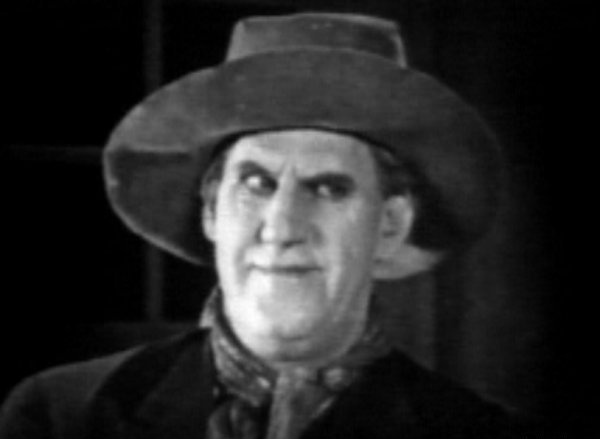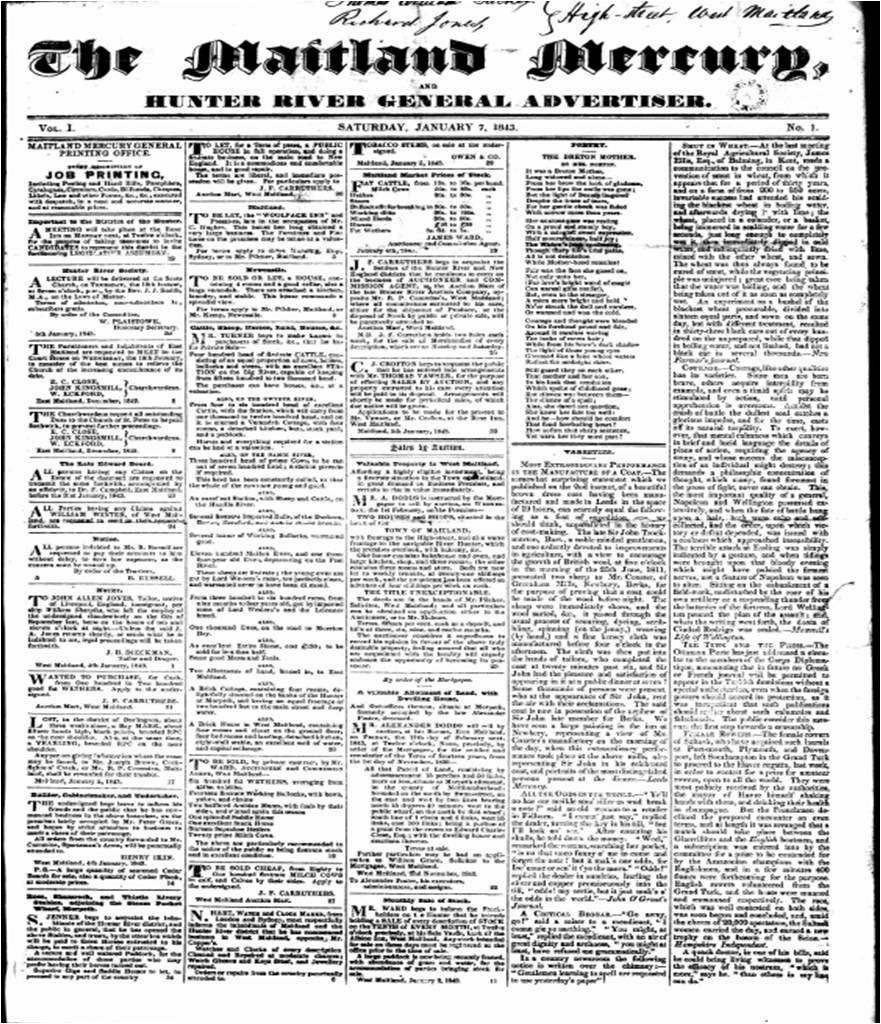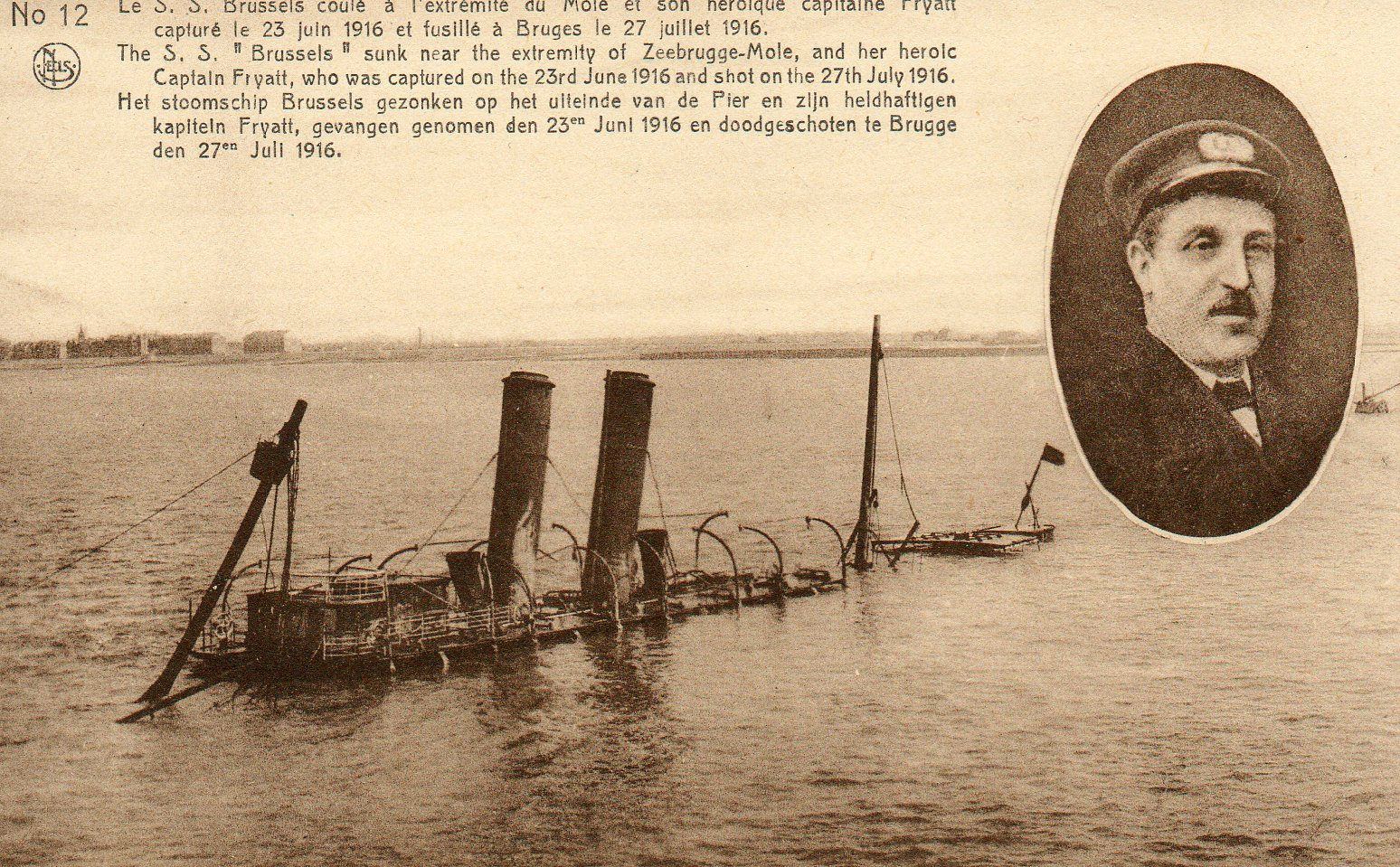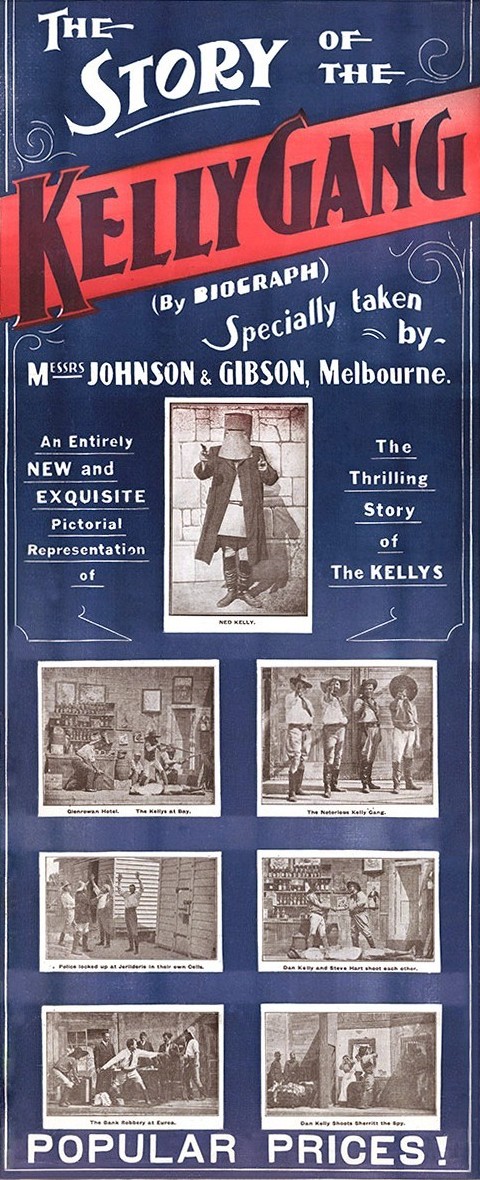|
John Gavin (director)
John F. ('Jack') Gavin (9 February 1874 – 6 January 1938) was a pioneer Australian film actor and director, one of the early filmmakers of the 1910s. He is best known for making films about bushrangers such as Captain Thunderbolt, Captain Moonlite, Ben Hall and Frank Gardiner. Known informally as 'Jack', Gavin worked in collaboration with his wife Agnes, who scripted many of his films. Film historians Graham Shirley and Brian Adams have written; "although Gavin was prolific his later surviving work shows that his entrepreneurial talent outweighed any he might have had as director." Amongst several claims made later in life or soon after his death was one that he had made Australia's first animated short, an advertising film which featured a koala "lapping up a cough remedy". Biography John F. Gavin was born in Sydney on 9 February 1874, the eldest child of Francis Gavin and Catherine (''née'' O'Brien).Family records, Ancestry.com. Gavin later claimed he worked for a ... [...More Info...] [...Related Items...] OR: [Wikipedia] [Google] [Baidu] |
Sydney, New South Wales
Sydney ( ) is the capital city of the state of New South Wales, and the most populous city in both Australia and Oceania. Located on Australia's east coast, the metropolis surrounds Sydney Harbour and extends about towards the Blue Mountains to the west, Hawkesbury to the north, the Royal National Park to the south and Macarthur to the south-west. Sydney is made up of 658 suburbs, spread across 33 local government areas. Residents of the city are known as "Sydneysiders". The 2021 census recorded the population of Greater Sydney as 5,231,150, meaning the city is home to approximately 66% of the state's population. Estimated resident population, 30 June 2017. Nicknames of the city include the 'Emerald City' and the 'Harbour City'. Aboriginal Australians have inhabited the Greater Sydney region for at least 30,000 years, and Aboriginal engravings and cultural sites are common throughout Greater Sydney. The traditional custodians of the land on which modern Sydney stands are t ... [...More Info...] [...Related Items...] OR: [Wikipedia] [Google] [Baidu] |
The Arrow (newspaper)
''The Arrow'' was a weekly English-language broadsheet newspaper published in Sydney, Australia between 1896 and 1933. The paper had previously been published under two earlier titles, ''The Dead Bird'' and ''Bird O’Freedom'' and also appeared as the ''Saturday Referee and the Arrow''. It was later absorbed by '' The Referee''. History ''The Dead Bird'' was first published on 16 May 1889 by Herbert Allan Risdale, and in 1891 the name was changed to ''Bird O'Freedom''. On 7 March 1896 the name changed to ''The Arrow''. It was published by Harry Markham Evans. The paper was a sporting weekly. In 1916 ''The Arrow'' came into the ownership of Hugh D. McIntosh in 1916, when he acquired the '' Sunday Times''. In 1933 the paper was absorbed by '' The Referee'', another sporting weekly, which began publication in 1886 and ceased publication on 31 August 1939. Digitisation Many issues of the paper have been digitised as part of the Australian Newspapers Digitisation Program, a pr ... [...More Info...] [...Related Items...] OR: [Wikipedia] [Google] [Baidu] |
Rudolph Valentino
Rodolfo Pietro Filiberto Raffaello Guglielmi di Valentina d'Antonguolla (May 6, 1895 – August 23, 1926), known professionally as Rudolph Valentino and nicknamed The Latin Lover, was an Italian actor based in the United States who starred in several well-known silent films including '' The Four Horsemen of the Apocalypse,'' '' The Sheik,'' '' Blood and Sand,'' ''The Eagle'', and ''The Son of the Sheik.'' Valentino was a sex symbol of the 1920s, known in Hollywood as the "Latin Lover" (a title invented for him by Hollywood moguls), the "Great Lover", or simply Valentino. His early death at the age of 31 caused mass hysteria among his fans, further cementing his place in early cinematic history as a cultural film icon. Early life Childhood and emigration Valentino was born in Castellaneta, Apulia, and named Rodolfo Pietro Filiberto Raffaello Guglielmi di Valentina d'Antonguella. Birth name: Rodolfo Pietro Filiberto Raffaello Guglielmi. His father, Giovanni Antonio Giusep ... [...More Info...] [...Related Items...] OR: [Wikipedia] [Google] [Baidu] |
Lon Chaney, Sr
Lon or LON may refer to: People * Lon (photographer), pseudonym of Alonzo Hanagan, also known as "Lon of New York" * Lon (name), a list of people with the given name, nickname or surname Fictional characters * Lon Cohen, a character in the Nero Wolfe novels by Rex Stout * Lon Suder, a character on the television series ''Star Trek: Voyager'' LON * Launch on Need, a Space Shuttle rescue mission which would have been mounted to rescue the crew of a Space Shuttle if needed * League of Nations, the first permanent international organization for maintaining world peace, the predecessor of the United Nations * Local Operating Network, a networking platform by Echelon Corporation * Local oxidation nanolithography, a nanofabrication technique Other uses * ''Lon'' (butterfly), a genus of butterflies * Lon protease family, in molecular biology * lon., abbreviation for longitude * LON, the IATA airport code covering all airports within the London area of the United Kingdom, see Air ... [...More Info...] [...Related Items...] OR: [Wikipedia] [Google] [Baidu] |
Maitland Weekly Mercury
The ''Maitland Mercury'' is Australia's third oldest regional newspaper, preceded only by the ''Geelong Advertiser'' (estab. 1840) and the ''Launceston Examiner'' (estab. 1842). The ''Maitland Mercury'' was established in 1843 when it was called ''The Maitland Mercury and Hunter River General Advertiser''. ''The Maitland Mercury'' is still in circulation serving the city of Maitland and the surrounding Lower Hunter Valley. These days the Maitland Mercury has a weekly print edition which appears on Fridays. History It was originally a weekly newspaper, founded by Richard Jones, an English migrant from Liverpool who also served as treasurer of NSW for a brief period. The first issue was published as ''The Maitland Mercury and Hunter River General Advertiser'' on 7 January 1843. It has been a daily since 1894. when it was issued under two banners as ''The Maitland Daily Mercury'' during the week and ''The Maitland Weekly Mercury'' on Saturdays. From 1870 to 1873, Margaret Fall ... [...More Info...] [...Related Items...] OR: [Wikipedia] [Google] [Baidu] |
The World's News
''The World's News'' was a newspaper published in Sydney, Australia from 1901 to 1955. History ''The World's News'' was first published on 21 December 1901 by Watkin Wynne. Digitisation This paper has been digitised as part of the Australian Newspapers Digitisation Program project of the National Library of Australia. See also * List of newspapers in Australia * List of newspapers in New South Wales This is a list of newspapers in New South Wales in Australia. List of newspapers in New South Wales (A) List of newspapers in New South Wales (B) List of newspapers in New South Wales (C) List of newspapers in New South Wales (D) Li ... References External links * {{DEFAULTSORT:Worlds News, The Defunct newspapers published in Sydney ... [...More Info...] [...Related Items...] OR: [Wikipedia] [Google] [Baidu] |
The Freeman's Journal (Sydney)
''The Catholic Weekly'' is an English language newspaper currently published in Sydney, Australia. It is published in tabloid format. Throughout its history, it has also been published as ''The Freeman's Journal'' and ''Catholic Freeman's Journal''. History The paper's history can be traced back to 27 June 1850 when it was named ''The Freeman's Journal'', under the influence of editor and later-archdeacon John McEncroe (1794–1868). Printer and publisher Jeremiah Moore went onto running a successful bookstore. John Francis Blakeney (–1914) was one of its principal editors, commencing as an apprentice in 1867. The managing director until 1919 was Mr J. H. de Courcy, having started in the printing section of the paper about 1865. Initially based in George Street, Sydney, by May 1886 was moved to Lang Street, and in 1925, to the Hibernian Building, Elizabeth Street. In 1932 its name changed to ''Catholic Freeman's Journal''. In 1942, the ''Catholic Freeman's Journal'' ... [...More Info...] [...Related Items...] OR: [Wikipedia] [Google] [Baidu] |
The Mirror Of Australia
''The Mirror of Australia'' was an English-language newspaper published in Sydney, Australia from 1915 to 1917. It later merged with the ''Globe and Sunday Times War Pictorial'' and continued under the masthead of ''Mirror''. History The first issue of ''The Mirror of Australia'' appeared on 30 June 1915 and was modeled on the '' London Daily Mirror'' and ''London Daily Sketch'' papers. The last issue of ''The Mirror of Australia'' appeared on 19 May 1917. The paper was published during the First World War, and featured articles about Australian Imperial Forces and their engagement in the conflict. The paper is listed in the ''Union list of local newspapers in New South Wales public libraries''. Digitisation The paper has been digitised as part of the Australian Newspapers Digitisation Program of the National Library of Australia The National Library of Australia (NLA), formerly the Commonwealth National Library and Commonwealth Parliament Library, is the largest r ... [...More Info...] [...Related Items...] OR: [Wikipedia] [Google] [Baidu] |
The Truth (Sydney Newspaper)
''Truth'' was a newspaper published in Sydney, Australia. It was founded in August 1890 by William Nicholas Willis and its first editor was Adolphus Taylor. In 1891 it claimed to be "The organ of radical democracy and Australian National Independence" and advocated "a republican Commonwealth created by the will of the whole people", but from its early days it was mainly a scandal sheet. Subsequent owners included Adolphus Taylor, Paddy Crick and John Norton. Norton established several subsidiaries, including the ''Sportsman'' (1900), the ''Brisbane Truth'' (1900), the Melbourne ''Truth'' (1902) and the Perth ''Truth'' (1903 to 1931), and an Adelaide ''Truth'' (1916-1964)''.'' Ezra Norton Although John Norton disinherited his estranged wife, Ada Norton and his son Ezra Norton at his death in 1916 (with the bulk of his estate going to his daughter, Joan), Mrs Norton persuaded the New South Wales Parliament to backdate the new ''Testator's Family Maintenance Act'' to take ef ... [...More Info...] [...Related Items...] OR: [Wikipedia] [Google] [Baidu] |
Charles Fryatt
Charles Algernon Fryatt (2 December 1872 – 27 July 1916) was a British merchant seaman who was court martialled by the Imperial German Navy for attempting to ram a German U-boat in 1915. When his ship, the , was captured off occupied Belgium in 1916, Captain Fryatt was court-martialled under German military law and sentenced to death for "illegal civilian warfare". International outrage followed his execution by firing squad near Bruges, Belgium. In 1919, his body was reburied with full honours in the United Kingdom. Early life Fryatt was born on 2 December 1872 in Southampton, the son of Charles and Mary Fryatt. He attended Freemantle School in the late 1870s. In 1881, Fryatt's family lived at 22 Trinity Terrace, in St Mary's, Southampton, but later moved to Harwich, Essex where he attended the Corporation School. He and his wife, Ethel, had seven children; six girls and one boy. The children were Olive, Victoria, Doris, Vera, Mabel, Charles and Dorothy. The younger Charles l ... [...More Info...] [...Related Items...] OR: [Wikipedia] [Google] [Baidu] |
Edith Cavell
Edith Louisa Cavell ( ; 4 December 1865 – 12 October 1915) was a British nurse. She is celebrated for saving the lives of soldiers from both sides without discrimination and for helping some 200 Allied soldiers escape from German-occupied Belgium during the First World War, for which she was arrested under martial law. She was accused of treason, found guilty by a court-martial and sentenced to death. Despite international pressure for mercy, she was shot by a German firing squad. Her execution received worldwide condemnation and extensive press coverage. The night before her execution, she said, "Patriotism is not enough. I must have no hatred or bitterness towards anyone." These words were later inscribed on a memorial to her near Trafalgar Square. Her strong Anglican beliefs propelled her to help all those who needed it, both German and Allied soldiers. She was quoted as saying, "I can't stop while there are lives to be saved." The Church of England commemorates her in its ... [...More Info...] [...Related Items...] OR: [Wikipedia] [Google] [Baidu] |
Bushranger Ban
The bushranger ban was a ban on films about bushrangers that came in effect in Australia in 1911–12. Films about bushrangers had been the most popular genre of local films ever since ''The Story of the Kelly Gang'' (1906). Governments were worried about the influence this would have on the population and bans against films depicting bushrangers were introduced in South Australia (1911), New South Wales (a 1912 amendment to the 1908 New South Wales Theatres and Public Halls Act) and Victoria (1912). The decision had a considerable impact on the local industry as it meant filmmakers could not work in a popular genre. Australian film production, which in 1911 was one of the highest in the world, went into decline. The ban was still in effect in the 1930s and hurt efforts to make a number of Australian movies, including an adaptation of ''Robbery Under Arms'' from director Ken G. Hall. A ban on a film about Ned Kelly, '' When the Kellys Rode'' was not lifted until 1942. The Hollyw ... [...More Info...] [...Related Items...] OR: [Wikipedia] [Google] [Baidu] |






